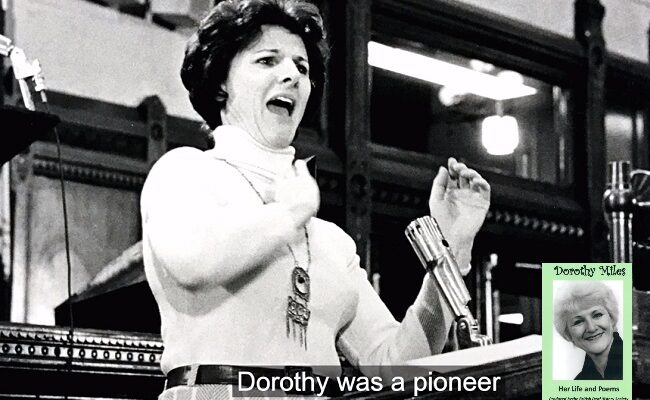Dorothy Miles, affectionately known as “Dot,” was an extraordinary poet, activist, and cultural icon in the Deaf community. Born on August 19, 1931, in Pontypridd, Wales, she became Deaf at the age of eight due to meningitis. Her life was a testament to resilience, creativity, and advocacy, inspiring generations to embrace Deaf culture and sign language as powerful forms of expression
Also Read:- HG International What Really Happened to Dr. Victor Chang?
Early Life and Education
Raised in a hearing family, Dorothy faced early challenges in communication, which sparked her passion for language. She attended Mary Hare Grammar School for the Deaf in England, where she was introduced to sign language. This period laid the foundation for her pioneering work in sign language poetry, blending British Sign Language (BSL) and American Sign Language (ASL) with the artistry of written English
Pioneering Sign Language Poetry
Dorothy’s work redefined poetry by incorporating the visual and rhythmic elements of sign language. Her poems, such as “Soul to Soul” and “The Door”, explored themes of identity, belonging, and the Deaf experience. As a pioneer of modern BSL poetry, she showed the world that poetry could transcend auditory boundaries, resonating with both Deaf and hearing audiences
Her contributions extended beyond her own poetry. Dorothy mentored younger Deaf poets and performers, encouraging them to explore creative expression through their unique cultural lens. She remains a foundational figure in the evolution of Deaf poetry and visual art
Advocacy and Cultural Impact
Dorothy was not just a poet but a passionate advocate for Deaf rights. She worked tirelessly to bridge the gap between the Deaf and hearing communities, emphasizing the importance of recognizing sign language as a legitimate linguistic system. Her efforts helped destigmatize Deaf culture and encouraged pride among Deaf individuals in their identity and heritage
Her activism included extensive travels between the UK and the US, fostering connections across international Deaf communities. Her work continues to influence organizations and initiatives that promote Deaf art, education, and cultural preservation
Dorothy Miles Cultural Centre
In honor of her legacy, the Dorothy Miles Cultural Centre was established to promote arts within the Deaf community. The center serves as a hub for artistic expression, showcasing works that embody Dorothy’s belief in the transformative power of art and community
Dorothy Miles’ Death and Legacy
Dorothy Miles passed away on January 30, 1993, leaving behind a rich legacy. Though her death was a significant loss, her contributions endure through her poetry, advocacy, and the institutions that preserve her memory. The exact cause of her death is rarely discussed publicly, but her enduring influence on the Deaf and literary communities is celebrated globally
FAQs
- What are Dorothy Miles’ most famous poems?
Dorothy Miles is renowned for “Soul to Soul” and “The Door”, which reflect themes of Deaf culture and human connection. - Where was Dorothy Miles born?
Dorothy Miles was born in Pontypridd, Wales, on August 19, 1931. - What was Dorothy Miles’ cause of death?
The details surrounding her passing remain private, though her impact on Deaf culture and the arts is widely recognized. - Who was Dorothy Miles’ husband?
There is no public record of Dorothy Miles being married. - What is Language for the Eye by Dorothy Miles?
Language for the Eye is a collection of her works that emphasizes the visual and emotional power of sign language as a poetic medium. - What organizations honor Dorothy Miles’ contributions?
The Dorothy Miles Cultural Centre and various Deaf organizations worldwide continue to celebrate her legacy
Dorothy Miles remains a beacon of inspiration, bridging cultural gaps and showcasing the beauty of Deaf culture through poetry and advocacy. Her legacy continues to inspire both Deaf and hearing communities to appreciate and celebrate the richness of sign language and the arts.













